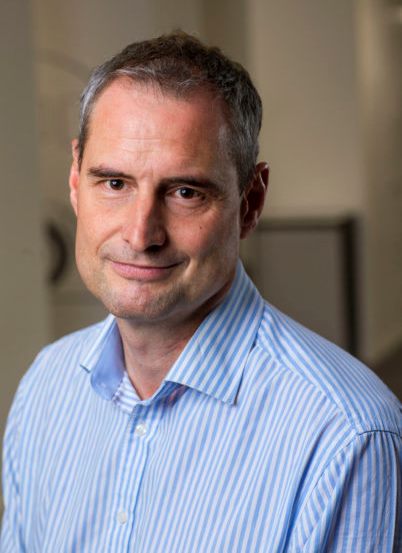OPINION: Stuart Hayward-Higham, technical development director at SUEZ recycling and recovery UK , explains that he is disappointed with aspects of last months report by the National Infrastructure Commission, and outlines what he would have liked to have seen.
In the weeks since the publication of the National Infrastructure Commission’s report assessing the nation’s future infrastructure needs, one particular reaction has stayed with me, and that is one of disappointment.
This reaction came during an initial read of the main ‘headline’ document, where it referenced waste-related items. What disappointed me most was the way the presented outputs ran counter to my understanding of the NIC’s remit in this area. I had been expecting a report that presented the results of thinking and modelling; headlines of the uncertainties under consideration; and the main policy drivers. I was expecting clear and concise conclusions about how much capacity is required, by when and what the outcomes will be. Unfortunately, the report just didn’t deliver this.

Stuart Hayward-Higham explained that he was largely disappointed with last month’s report (credit paulbox)
In fairness, some of the main directions are clear and understandable. More recycling, more food waste extraction and more diversion from landfill are all very logical and welcome. But the modelling around waste arisings uses a range of assumptions that results in uncertainty and therefore delivers different policy impacts. For example, the various assumptions result in additional annual residual waste treatment requirements by 2050 which range from two million tonnes to 16 million tonnes.
RDF export
The figures also assume that the RDF export market to the continent is maintained at 3.5 million tonnes per year; co-incineration remains the same; and recycling rates do not change. Potential Brexit issues around exports suggest the need for an additional 13 energy-from-waste (EfW) facilities for domestic use and it would have been helpful if that was better explored. Closer inspection shows that around six of the EfW plants listed as due-to-be-operational in 2020 do not appear to be under construction or, in some cases, financially closed. Bringing together the various scenarios and options for EFW infrastructure requirements could range from seven plants (at 260ktpa per plant) to as many as 80, depending on the scenarios and potential impacts.
The technical report contains almost all the figures and can provide clarity, but it is unfortunate that the headline report leads only with those around ‘avoided waste’. That might be attractive to some of the audience but, given the purpose of the exercise, it is much less useful than the modelling of likely requirements. Our own Mind The Gap report last year showed the implications, on a regional basis, of how many new facilities are expected, how different recycling levels affect demand and how movements in the RDF export market will have an impact. We tried to indicate the capacities required, where and when they might be needed and under what options and assumptions. We didn’t state that our base assumptions around recycling and waste minimization would remove the need for up to 23 EFW’s, as the report’s purpose was to consider what capacity was needed.
Although much of the work appears to have been done in the technical report, this has not been transposed into the headline report and so my high hopes for a consolidated view, which explored the scenarios and informed the audience and the market, were not met.
Food waste
Again, when I looked at the need for new food waste treatment capacity, I was hoping to see some exploration of the need for more treatment capacity – balanced against the Government’s plan to halve food waste by 2030, much as we explored in our ‘Vision’ document published in June. In neither NIC report can I find any clear identification of how this planned minimization has been included – indeed the figure for total food waste suggests it hasn’t. If I am right, this will mean over-capacity in anaerobic digestion treatment by 2030, something neither the Government nor industry will want.
“We believe that making better use of residual waste, as technical and economic circumstances permit, should be a goal for the whole industry.”
Stuart Hayward-Higham
Suez
Turning back to EfW, we (SUEZ) have long viewed traditional facilities as a transitional technology. We believe that making better use of residual waste, as technical and economic circumstances permit, should be a goal for the whole industry. It means that moving to syngas, to be used for power, or producing new fuels or chemicals, is an essential transition.
The NIC recognises these possibilities and the benefits that they can bring, but it also notes that many thermal technologies are not commercially proven and would take some years to be in a position where they are a reliable, main stream, treatment option. Further, it does not seem to fully explore where the priorities should be beyond moving from power to gas to grid. Does that mean syngas and chemicals are not important, or just not considered as yet? Does that also mean that syngas to grid takes priority over syngas to fuels, especially where the RTFO and Department of Transport seem to be pushing hard for syngas to jet fuel?
So instead of concentrating on ‘avoided’ waste, the NIC should have explored how new EFWs are still required and what finance and development work was needed to ensure they are available for the mainstream market at an appropriate time in the future. Specifically, I was hoping it would have explored the following:
• Almost all of the current and near-future EFW fleet will need major refurbishment or replacement by 2050, so there are clear opportunities for the market to move to these new technologies in a phased and planned manner when they are commercially viable
• How much more EFW is needed today and tomorrow to finish the job of keeping residual waste out of landfill through the transition?
· What the priority cascade should be between residual waste to power, the gas to grid, to chemicals and to fuels,
• How government could support research and development to get gasification to syngas projects into commercially viable propositions.
‘Missed opportunity’
Part of my disappointment is that I feel that the NIC work represents a missed opportunity, especially because much of the detailed work has been done – but not presented in a clear way in the headline report. All interested parties should read the technical report and spend time understanding how the details it includes can inform their own plans. If you rely on the headline report, you may well miss vital nuances and be led towards incorrect, incomplete and ultimately false or costly conclusions.
The post Disappointed but not disheartened by NIC report appeared first on letsrecycle.com.
Source: letsrecycle.com General



